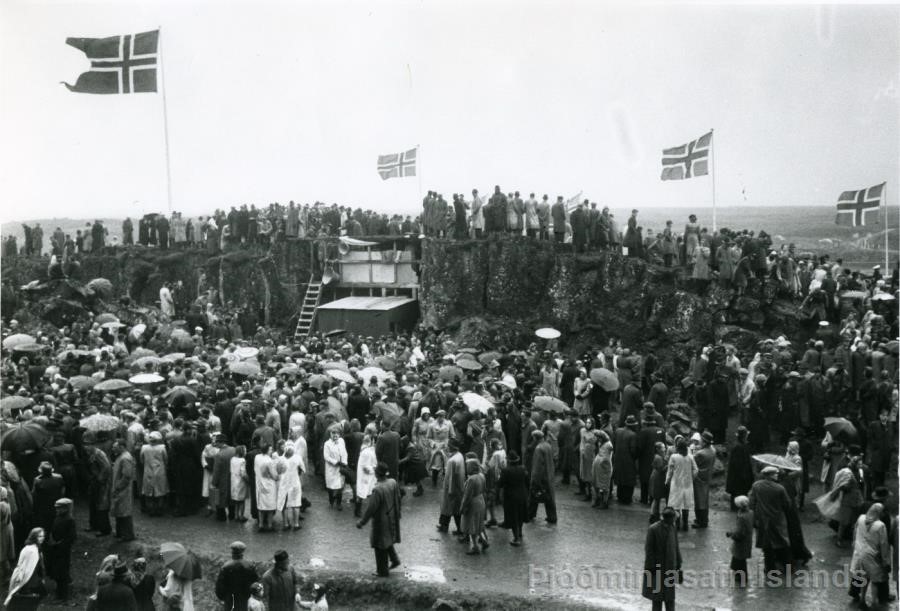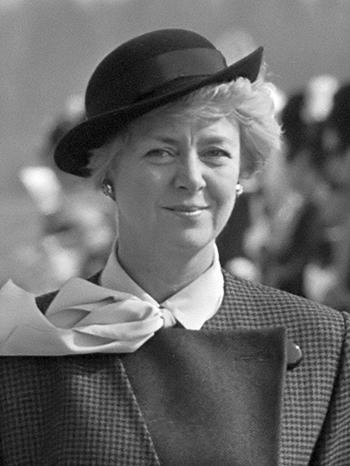History of Iceland from 1944
After a referendum almost unanimously in favour, Iceland was declared an independent republic on 17th June 1944 at Þingvellir. Denmark did not, however, repeal the law which set out the terms of its personal union with Iceland until 1950. Since then, Iceland has been able to re-claim much of its cultural heritage from Danish institutions. Fisheries and power production saw economic growth in Iceland in the post-war era, and even in to the 21st century. However, in 2008, a severe economic downturn led to austerity measures being necessary which proved to be a success.

The Republic of Iceland
On June 17, 1944, the Republic of Iceland was declared in Þingvellir southwest of Iceland. The establishment of the Republic of Iceland as a country had been accepted almost unanimously by a referendum. The participation rate in the referendum was 98% of those entitled to vote, of whom 99.5% supported separation and 95.04% voted in favour of the founding of a republic. Sveinn Björnsson (1881-1952) was elected as the first president, and he declared Iceland independent. Thus began a new era in Icelandic history. Iceland's unilateral repeal of the Act of Union was not formally recognised until, after negotiations with Iceland on the two countries' mutual relations, Denmark repealed the law in 1950.
At the same time as the negotiations after the war, Iceland requested a return of the Icelandic manuscripts from the Arnamagnean Collection and The Danish Royal Library's collections. The requirement to hand over Icelandic manuscripts was on the grounds that, on behalf of the University of Copenhagen, the Icelander Árni Magnússon had collected and bought up the worn, old Icelandic manuscripts that were to be found on Icelandic farms and in churches in the 1700s. This collection formed the basis of the Arnamagnean Collection at the University of Copenhagen. Based on a Commission white paper, and after lengthy and difficult discussions, a solution was reached which the Danish Parliament (Folketing) adopted into law in 1965. It set out that any manuscripts or documents from the collections in question that might be considered a part of Icelandic cultural heritage had to be returned to Iceland. The last manuscripts to be returned after the division agreement were handed over in June 1997.
In the post-war period, Iceland has progressed economically as a result of the development of modern sea fishery and the construction of power plants that utilise geological energy and hydropower. In 1946, the country became a member of the UN, in 1948 the OECD, in 1949 NATO, and in 1952 the Nordic Council. In 1951 the United States established the Keflavík military base near Reykjavík.

Republican celebrations in Iceland in the wake of the 1944 Independence Referendum. Photo: Courtesy of The National Museum of Iceland.
The post-war era saw a number of serious political conflicts between Iceland and Britain. The close Western European cooperation did not prevent Iceland having confrontations with Britain regarding fishing borders near Iceland in the years between 1958 and 1976. These so-called ‘cod wars’ were due to the expansion of Iceland's fishing zones, but in 1976 the British government were forced to concede to the Icelandic demand for a border of 200 nautical miles around Iceland.
During the Cold War, Iceland sided strongly with the United States and its Western allies, but the presence of US troops in Iceland from 1951 was for decades a highly controversial political issue within the country. Potential membership of the European Union has also provoked strong opposition in Iceland, although for many years the country has been in full collaboration with its neighbours in the Nordic Council and with EFTA, and is a part of the European Economic Cooperation Agreement of 1992.
Icelandic society from the 1990s
In 1999, the Constitution of June 1944 was amended, as the Althing became a unicameral parliament. The legislative power lies with the Althing and the president jointly. The Althing has 63 members, who are elected for a four-year period. Head of government is the prime minister of Iceland, who represents a majority in the Althing and is appointed by the president, who is head of state and elected every four years. From 1980 to 1996, Vigdís Finnbogadóttir (born 1930) was the world's first democratically elected female president. The fifth president in Iceland was Ólafur Ragnar Grímsson (born 1943), who was elected on June 29, 1996. He remained president until president Guðni Thorlacius Jóhannesson (born 1968) was elected in 2016.
| Vigdís Finnbogadóttir (born 1930) was the world's first democratically elected female president and was president of Iceland from 1980 to 1996. The president is head of state and elected every four years. Photo: Rob C. Croes / Anefo (CC BY-SA 3.0). |  |
In 2008, the Republic of Iceland had a population of over 300,000, and the country's economy and welfare system developed rapidly in the years that followed. After considerable financial troubles in the early 1990s resulting from reductions in cod quotas, Iceland experienced annual growth rates of between 4 and 5% from 1996. In 2007-2008, however, an economic downturn began that led to the Icelandic currency, the Króna, being devalued. A severe banking crisis hit during 2008, which had the consequence of the largest of the Icelandic banks being taken over by the state. Iceland had to ask for assistance in the form of international loans, and growth was significantly curtailed. After the economic collapse, the Social Democrats and the Left-Green Party took over government with Jóhanna Sigurðardóttir (born 1942) as Iceland's first female prime minister. Severe austerity reforms were implemented and unemployment began to fall. In the election in 2013, the government lost power, the victors instead being the two right-wing parties, the Independence Party and the Progress Party. These two parties subsequently remained in power until 2017 when the Left-Greens forged a coalition across the centre together with the Independence Party and the Progress Party. Head of the Left-Green Party Katrín Jakobsdóttir (born 1976) became prime minister on November 30, 2017.
The population almost only lives along the coast, and approximately 93% of Iceland's population are city dwellers, of which 60% live in Reykjavík and environs. On March 31st, 2019, the population of Iceland was 358,780.
Further Reading:
- Guðmundur Hálfdánarson, Historical Dictionary of Iceland (European Historical Dictionaries; 1997).
- Gunnar Karlsson, Iceland´s 1100 Years. The History of a Marginal Society (United Kingdom: Hurst & Co, 2000).
Links:
- Description of the Arnamagnean Collection on UNESCO Memory of the World Register website
- Thanks go to danmarkshistorien.dk for allowing us to translate this article. Read this article in Danish on danmarkshistorien.dk.